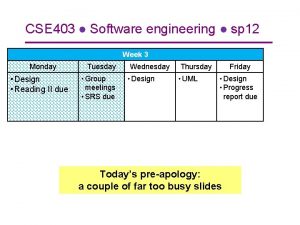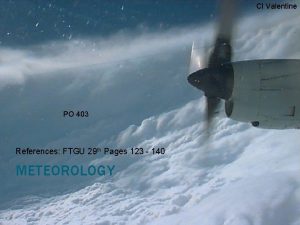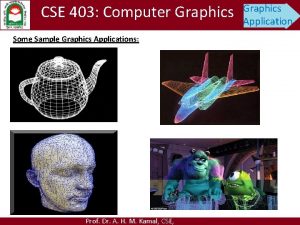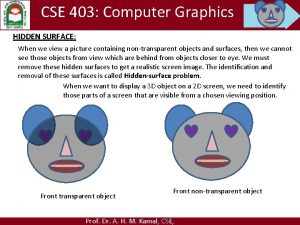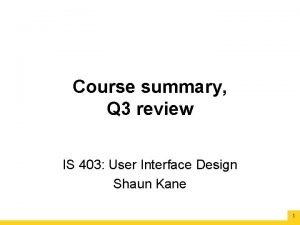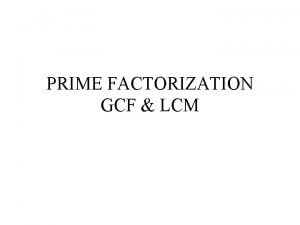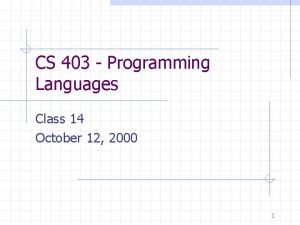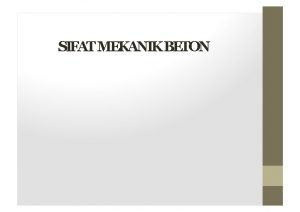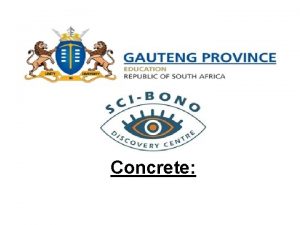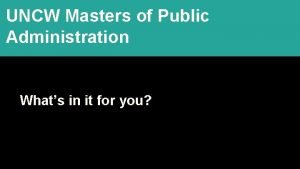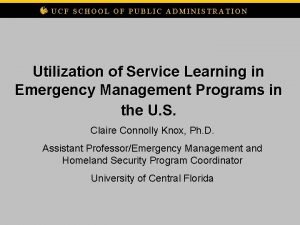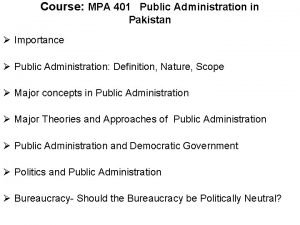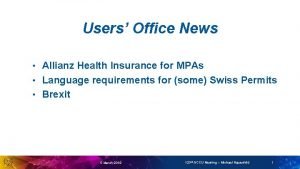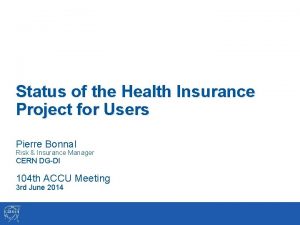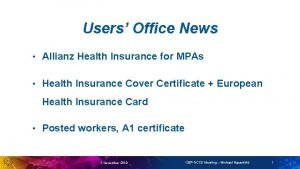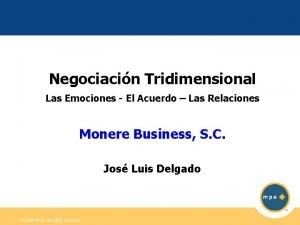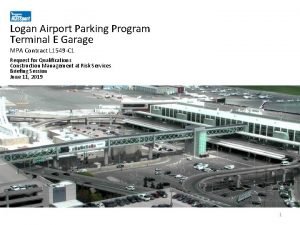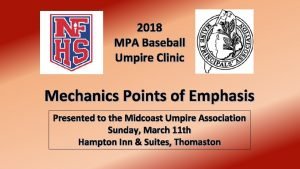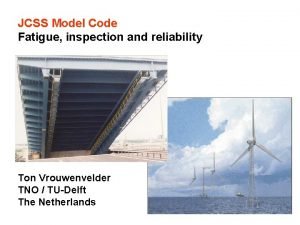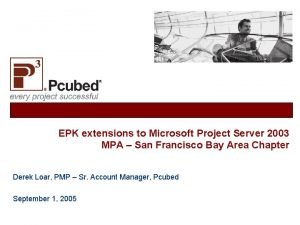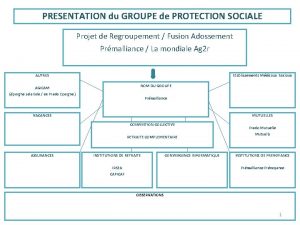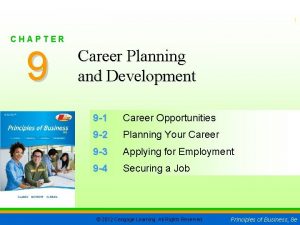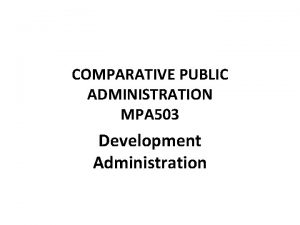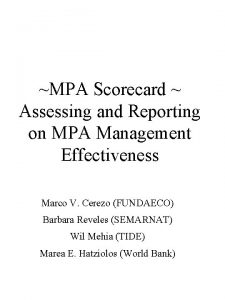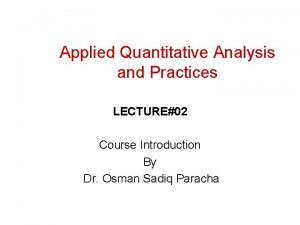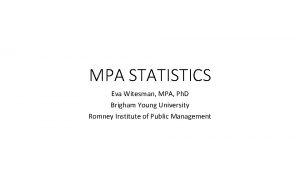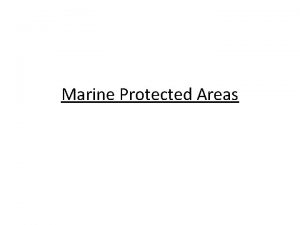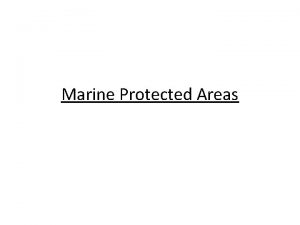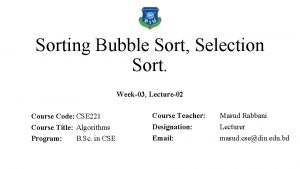1 Development Planning and Administration MPA 403 Lecture02





































- Slides: 37

1

Development Planning and Administration MPA – 403 Lecture-02 FACILITATOR Prof. Dr. Mohammad Majid Mahmood Bagram 0333 -5188677, majidbagram@yahoo. com

REFLECTIONS 3

HOW AN ORGANIZATION WORKS? Environment Inputs Human Resources Financial Resources Physical Resources Information Resources Transformation Managerial Functions: ØPlanning ØOrganizing ØLeading ØControlling Outputs Products & Services Feedback Environment 4

UNIVERSAL NEED FOR MANAGEMENT 5 © Prentice Hall, 2002

Management Functions & Activities PLANNING ORGANIZING LEADING CONTROLLING Defining Goals. Determining Directing Monitoring What needs Activities Motivating Establishing To be done All involve Ensuring that Strategy They are How it will parties Developing Accomplished Be done Resolving Subplans As planned Who is in Conflicts Coordinate activities GOALS Stated 6 by organization

THE CHANGING ORGANIZATION 7 © Prentice Hall, 2002

Levels of Management Top Managers Middle Managers First-line Managers Non-Managerial employees 8

SKILLS NEEDED AT DIFFERENT MANAGEMENT LEVELS 9 © Prentice Hall, 2002

Set Of Goals Define present situation Identify any supports And barriers Develop sets of action plan To reach the GOALS It’s the Decision about Conducting activities To reach the GOALS WHAT HOW WHEN WHO 10

Identify any supports Establish Set Of Goals Define present situation Identify any barriers Develop sets of Action activities G O A L S 11

GOALS Setting Methods SPECIFIC MEASURABLE ACHIEVEABLE REALISTIC TIME BOUND 12

Planning Process and Activities Planning process is regular decision making based on scientific method Identify the problems Gathering the Data analyzing Explore Alternatives Choosing Alternative Preparing the Decision 13

Planning Stages VISION MISSION Objectives Strategy Planning must be written Procedure Rules Programs Budget Policy 14

PLANNING STAGES Vision Mission Goals Objectives Strategies Tactics Policies Rules & Procedures 15

VISION 16

MISSION A statement of the basic purposes for which the organization exists. 17

GOALS Broad statements of the ends the organization intends to accomplish in order to fulfill its mission. 18

OBJECTIVES Are specific, measurable targets for the accomplishment of goals. 19

STRATEGIES Are general approaches that show goals should be achieved. 20

TACTICS Are specific guides to actions that will implement established strategies. 21

POLICIES Are general guidelines that direct and constrain decision making within an organization. 22

RULES & PROCEDURES Are specific statements that direct and constrain decision making in accordance with the organization’s policies. 23

PROGRAM & BUDGET 24

TYPES OF PLANNING Planning is typically discussed in terms of the level of planning and the planning time frame. Strategic Planning Tactical Planning Operational Planning Long Range Planning Short Range Planning 25

STRATEGIC PLANNING Deals with the development of an organization's mission, goals, strategies, and policies. 26

TACTICAL PLANNING Involves the design of tactics, the setting of objectives, and the development of procedures, rules, schedules, and budgets. 27

OPERATIONAL PLANNING Planning on a short-term basis to implement and control day-to-day operations. 28

LONG-RANGE PLANNING Involves looking three to five years (or more) into the future. Many organizations have a planning process that reviews and modifies their long-range plans on a regular basis, such as six months to a year. 29

SHORT-RANGE PLANNING Can range from daily, weekly, or monthly planning to a one year or two year time frame. 30

KEY ISSUES - DEVELOPMENT PLANNING AND ADMINISTRATION: ENVIRONMENTAL Rapid changes Workforce diversity Globalization Technology Internet revolution Legislation Skill shortages 31

Key issues - Development Planning and Administration: Organizational Competitive Position Decentralization Downsizing Outsourcing 32

Key issues - Development Planning and Administration: Cultural Basic assumptions and beliefs shared by members of an organization… • religion • norms • attitude & behaviors • language • values 33

Key issues - Development Planning and Administration: Individual Matching people and organizations Empowerment Motivation Job insecurity 34

SWOT Analysis S H T G N E R ST ES S S E N K A WE OPPORTUNITIES THR EATS 35

Development Planning and Administration comes alive when employees are involved in setting goals and determining the means to reach them 36

Thank you for your kind attention! FACILITATOR Prof. Dr. Mohammad Majid Mahmood Bagram 0333 -5188677, majidbagram@yahoo. com 37
 Cse 403
Cse 403 Po 403
Po 403 Medium voltage range
Medium voltage range Envirobond 403
Envirobond 403 Cse 403
Cse 403 Cse 403
Cse 403 403
403 Quantas prendas a turma 403 já levou para a escola
Quantas prendas a turma 403 já levou para a escola Factor tree for 225
Factor tree for 225 403 b 9 church plans
403 b 9 church plans Navair 00-25-403
Navair 00-25-403 Cs 403
Cs 403 Sifat fisik dan mekanik beton
Sifat fisik dan mekanik beton Concrete mixture ratio
Concrete mixture ratio 170 mpa
170 mpa Byu mpa
Byu mpa 인장강도 mpa
인장강도 mpa Uncw graduate programs
Uncw graduate programs Ucf mpa program
Ucf mpa program Public administration scope in pakistan
Public administration scope in pakistan Cern users office
Cern users office Allianz cern mpa
Allianz cern mpa Allianz cern mpa
Allianz cern mpa Descripción de emociones
Descripción de emociones Garage mpa
Garage mpa Mpa
Mpa Mpa baseball
Mpa baseball Alaska mpa
Alaska mpa 40 mpa
40 mpa Ms project server 2003
Ms project server 2003 Abelio ionis
Abelio ionis Mpa forum
Mpa forum Mpa
Mpa Administration of development
Administration of development Inactivism planning
Inactivism planning Short medium and long term planning in education
Short medium and long term planning in education Types of language planning slideshare
Types of language planning slideshare Chapter 9 career planning and development
Chapter 9 career planning and development
